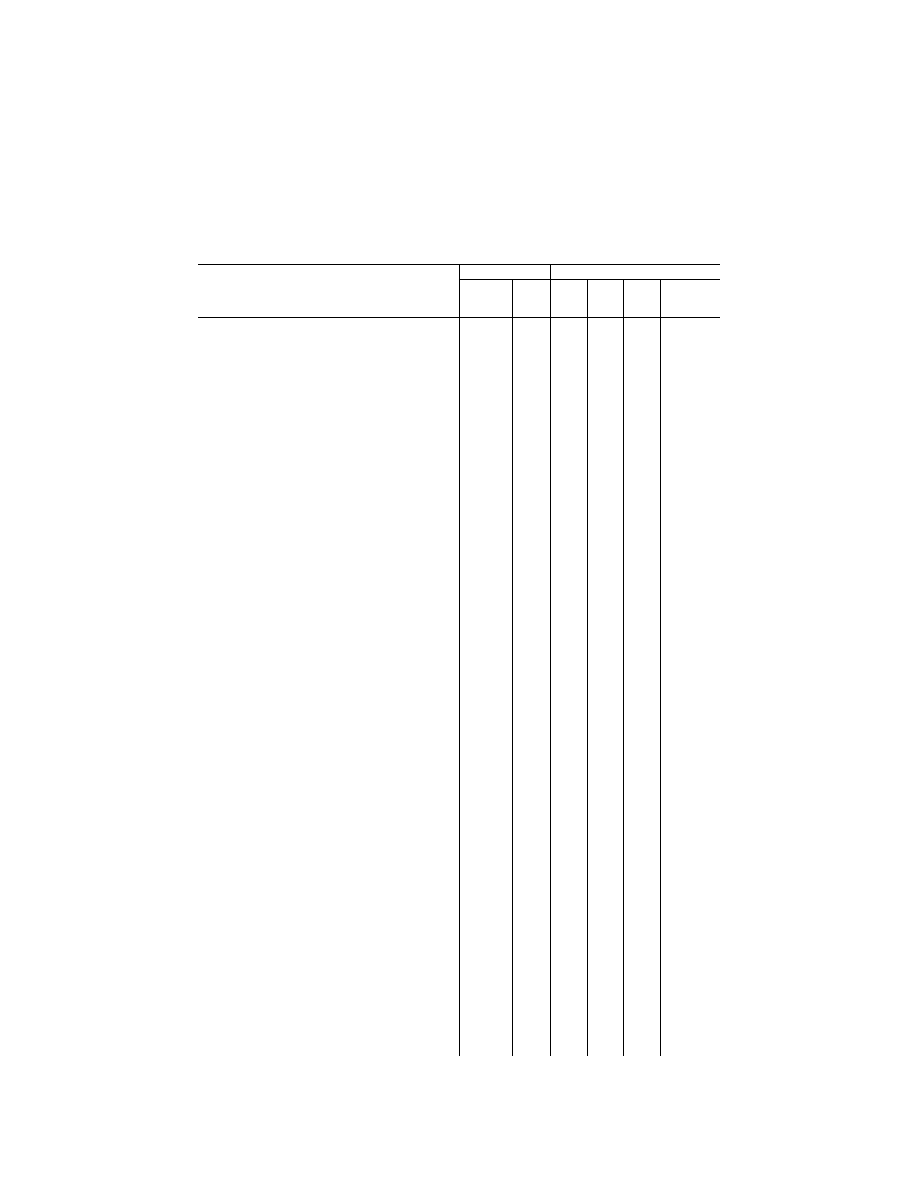
292
14 CFR Ch. I (1–1–19 Edition)
Pt. 121, App. F
Maneuvers/Procedures
Required Permitted
Simulated
instrument
conditions
Inflight
Visual
simu-
lator
Non-
visual
simu-
lator
Training
device
Waiver
provisions of
§ 121.441(d)
(d) Maneuvering to a landing with simulated powerplant
failure as follows:
(1) In the case of 3–engine airplanes, maneuvering to
a landing with an approved procedure that approxi-
mates the loss of two powerplants (center and one
outboard engine); or ..................................................
.................
...........
B* ..........
..........
......................
(2) In the case of other multiengine airplanes, maneu-
vering to a landing with a simulated failure of 50
percent of available powerplants, with the simulated
loss of power on one side of the airplane ................
.................
...........
B* ..........
..........
......................
Notwithstanding the requirements of subparagraphs (d) (1) and
(2) of this paragraph, in a proficiency check for other than a
pilot-in-command, the simulated loss of power may be only
the most critical powerplant. However, if a pilot satisfies the
requirements of subparagraphs (d) (1) or (2) of this para-
graph in a visual simulator, he also must maneuver in flight
to a landing with a simulated failure of the most critical pow-
erplant. In addition, a pilot-in-command may omit the maneu-
ver required by subparagraph (d)(1) or (d)(2) of this para-
graph during a required proficiency check or simulator
course of training if he satisfactorily performed that maneu-
ver during the preceding proficiency check, or during the
preceding approved simulator course of training under the
observation of a check airman, whichever was completed
later
(e) Except as provided in paragraph (f) of this section, if
the certificate holder is approved for circling minimums
below 1000–3, a landing under simulated circling ap-
proach conditions. However, when performed in an air-
plane, if circumstances beyond the control of the pilot
prevent a landing, the person conducting the check may
accept an approach to a point where, in his judgment, a
landing to a full stop could have been made ...................
.................
...........
B* ..........
..........
......................
#(f) A rejected landing, including a normal missed ap-
proach procedure, that is rejected approximately 50
′
over the runway and approximately over the runway
threshold. This maneuver may be combined with instru-
ment, circling, or missed approach procedures, but in-
strument conditions need not be simulated below 100
feet above the runway ......................................................
.................
...........
B ..........
..........
......................
(g) If the certificate holder is authorized to conduct EFVS oper-
ations to touchdown and rollout, at least one instrument ap-
proach to a landing must be made using an EFVS, including
the use of enhanced flight vision from 100 feet above the
touchdown zone elevation to touchdown and rollout ..............
B
* B
(h) If the certificate holder is authorized to conduct EFVS oper-
ations to 100 feet above the touchdown zone elevation, at
least one instrument approach to a landing must be made
using an EFVS, including the transition from enhanced flight
vision to natural vision at 100 feet above the touchdown
zone elevation ..........................................................................
B
* B
VI. Normal and Abnormal Procedures:
Each applicant must demonstrate the proper use of as many of
the systems and devices listed below as the person con-
ducting the check finds are necessary to determine that the
person being checked has a practical knowledge of the use
of the systems and devices appropriate to the airplane type:
(a) Anti-icing and de-icing systems ......................................
.................
...........
..........
B ..........
......................
(b) Auto-pilot systems ..........................................................
.................
...........
..........
B ..........
......................
(c) Automatic or other approach aid systems ......................
.................
...........
..........
B ..........
......................
(d) Stall warning devices, stall avoidance devices, and sta-
bility augmentation devices ..............................................
.................
...........
..........
B ..........
......................
(e) Airborne radar devices ...................................................
.................
...........
..........
B ..........
......................
(f) Any other systems, devices, or aids available ................
.................
...........
..........
B ..........
......................
(g) Hydraulic and electrical system failures and malfunc-
tions ..................................................................................
.................
...........
..........
..........
B ......................
(h) Landing gear and flap systems failure or malfunction ...
.................
...........
..........
..........
B
(i) Failure of navigation or communications equipment .......
.................
...........
..........
B ..........
......................
VerDate Sep<11>2014
08:20 May 17, 2019
Jkt 247048
PO 00000
Frm 00302
Fmt 8010
Sfmt 8002
Y:\SGML\247048.XXX
247048